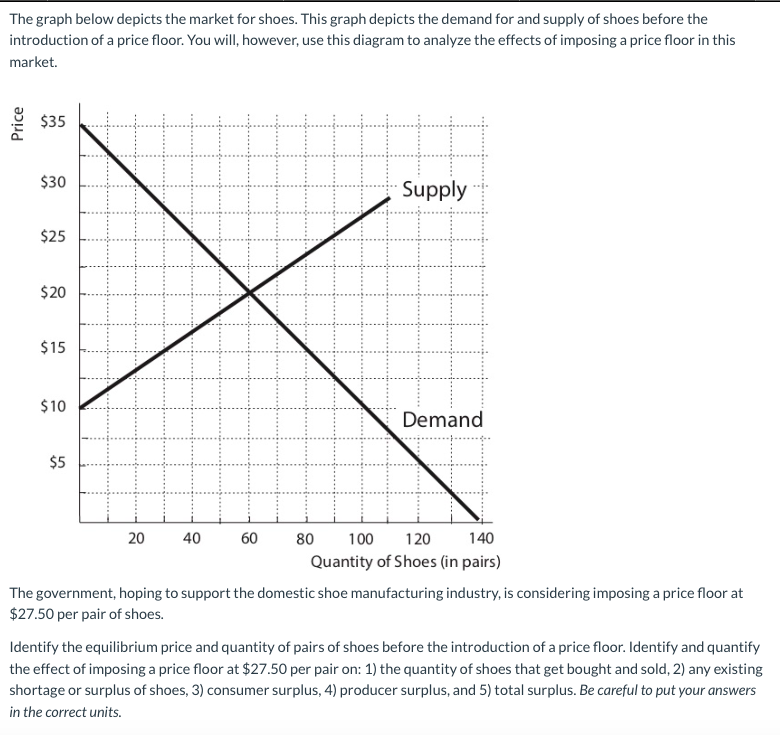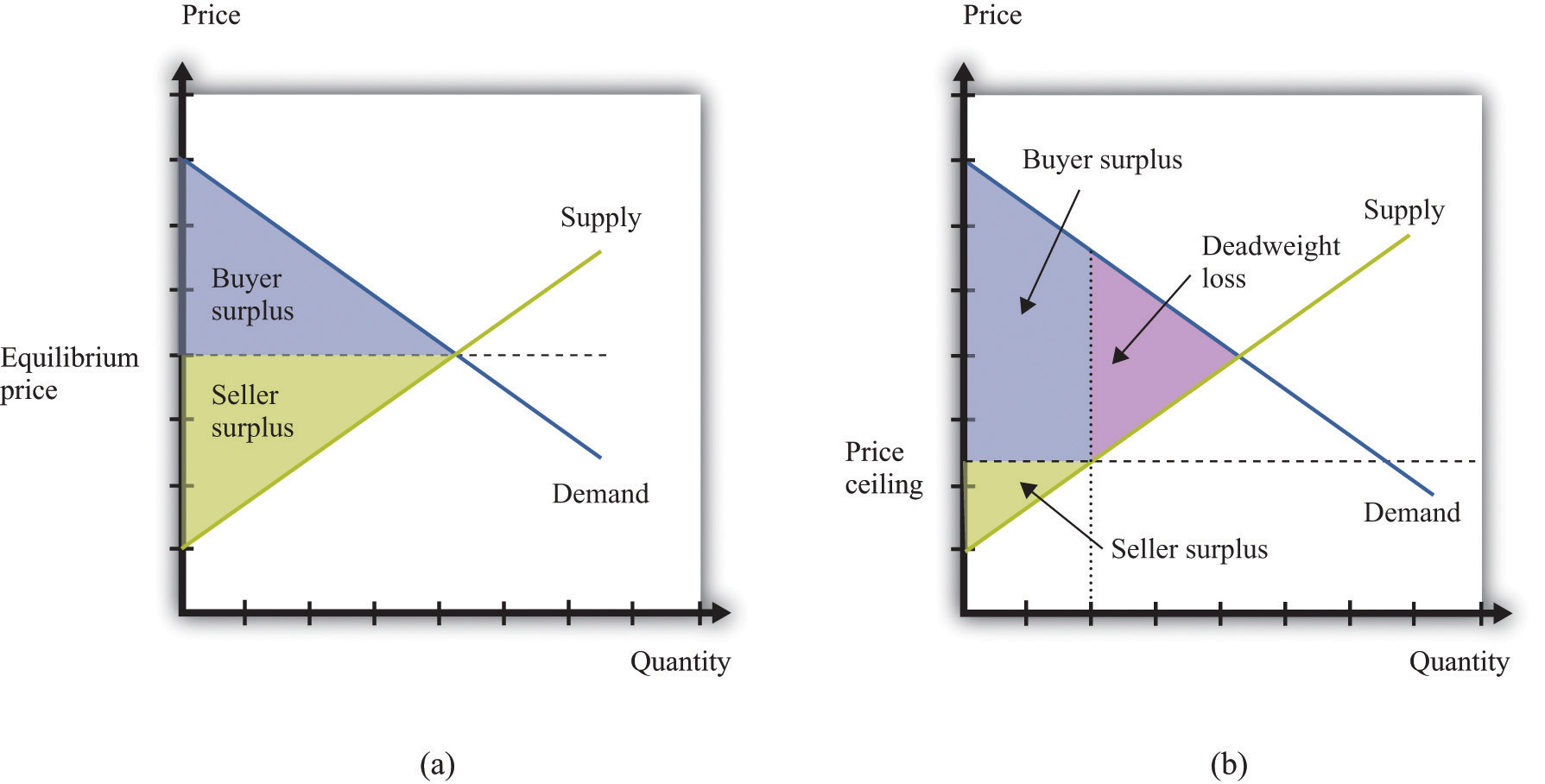Price Floor Change In Producer Surplus

Tutorial on how the impact of price floors and price ceilings to producer and consumer surplus.
Price floor change in producer surplus. As a result the new consumer surplus is g and the new producer surplus is h i. A price floor is an established lower boundary on the price of a commodity in the market. Price ceilings and price floors. Price floor is enforced with an only intention of assisting producers.
If price floor is less than market equilibrium price then it has no impact on the. Market interventions and deadweight loss. The equilibrium price commonly called the market price is the price where economic forces such as supply and demand are balanced and in the absence of external. Deadweight loss is explained also.
Tutorial on how the impact of price floors and price ceilings. A price floor is the lowest legal price a commodity can be sold at. On the other side of the equation is the producer surplus. A price floor is a government or group imposed price control or limit on how low a price can be charged for a product good commodity or service.
The most common price floor is the minimum wage the minimum price that can be payed for labor. A price floor must be higher than the equilibrium price in order to be effective. As a result two changes occur. However price floor has some adverse effects on the market.
As you will notice in the chart above there is another economic metric called the producer surplus which is the difference between the minimum price a producer would accept for goods services and the price they receive. Governments usually set up a price floor in order to ensure that the market price of a commodity does not fall below a level that would threaten the financial existence of producers of the commodity. Minimum wage and price floors. Price floors are used by the government to prevent prices from being too low.
If government implements a price floor there is a surplus in the market the consumer surplus shrinks and inefficiency produces deadweight loss. Rent control and deadweight loss. If the government establishes a price ceiling a shortage results which also causes the producer surplus to shrink and results in inefficiency called deadweight loss. Consumer surplus is g h j and producer surplus is i k.
Price floors are also used often in agriculture to try to protect farmers. How price controls reallocate surplus. First an inefficient outcome occurs and the total surplus of society is reduced. Government set price floor when it believes that the producers are receiving unfair amount.












































